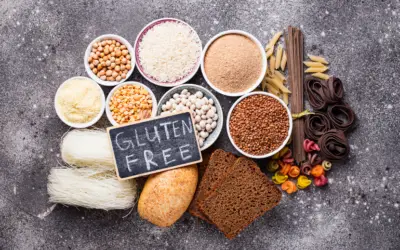
Nuts Have A Low Glycemic Index
What is Glycemic Index?
Glycemic Index (GI) measures how a person’s blood glucose levels increase after eating, caused by the carbohydrate content in food. This is because carbohydrates are broken down into glucose. We look at GI because too much glucose in the bloodstream will cause blood sugar levels to rise, which increases the risk of heart attack and stroke.
What does a GI number mean?
The GI number assigned to a food is given in comparison to the amount of pure glucose levels that would have been raised in healthy persons after consumption. For instance, a food with a GI of 40 would mean that blood sugar levels would have been raised to 40%, as if you had eaten pure glucose.
Low GI vs High GI
The GI score system ranges from 0 to 100. A low GI score would be 55 or less, a medium GI score would be 56-69 and a high GI score would be anything above 70.
Food with a lower GI score release glucose at a slower pace while food that are higher on the GI score release glucose at a faster pace. However, for food with a high GI score, not only will blood sugar level rise rapidly, but it will also fall drastically. Hence, consuming high GI food may cause a person to feel hungry again after they have just consumed food.
According to the Glycemic Index Foundation, a GI score of 45 offers the best nutritional benefits. However, this does not mean that one should strictly stick to food with a GI score of 45, as it depends on one’s needs at the point in time. For instance, athletes who participate in marathons need to consume food with high GI as they need the sudden bursts of energy to sustain their exercise. Conversely, people with type 2 diabetes should consume food with low GI. This is because their bodies cannot produce insulin to regulate the high glucose levels. Hence, they should eat food with low GI to release glucose more slowly. Ultimately, it is all about balancing high GI food with low GI food, so that you can reap the nutritional benefits of the different types of food.
Purpose of eating Low GI food
There is no way to reduce GI levels through food or herbs, except through medicine. However, you can eat food with low GI, and this type of food is beneficial for everyone, not just people with diabetes.
Glycemic Load vs Glycemic Index
Glycemic load (GL) tells you how much glucose there is per serving, while GI tells you how quickly the blood glucose level is raised, and how fast it is absorbed in the bloodstream. Gl is calculated as: (GI times the amount of carbohydrates) divided by 100. Dietitians recommend that people with diabetes should look at both GL and GI to avoid a sudden increase in blood sugar level. Overall, GI is important for diabetic people to manage the change in their sugar levels, while in the long run GL is good for monitoring total carbohydrate levels and ensuring that you have a healthy weight.
GI of nuts
Let us look at the GI of nuts. Most nuts have limited carbohydrate content, so they have relatively low GI levels ranging from 0 to 20. This makes them a good complement to food with high GI, since the oils in nuts help to absorb the carbohydrates and slow down digestion, maintaining blood glucose levels.
Almonds have a GI score of 0, because the carbohydrates found in them are just fiber. Peanuts have a GI of 14 and cashew nuts have a GI of 21, according to the American Journal of Clinical Nutrition. This difference is because cashew nuts have a higher hydrate content of 8 grams pers ounce serving, compared to peanuts which have 5 grams of carbohydrates. Information on the other GI’s of nuts are few and far between because nuts have low carbohydrate content. However, nuts such as pistachios, walnuts and macadamia nuts are healthy to snack on. Generally, raw nuts have lower GI than baked nuts. Lastly, some other figures of dried fruits are prunes which have a GI of 29 and apricots which, like cashew nuts, have a GI of 21.
Conclusion
All in all, nuts have low glycemic index, so you can be sure that they will not cause blood sugar spikes. Almonds are a good choice to eat, as they have a GI index of zero, are rich in antioxidants, vitamin E and fatty acids. An interesting fact is that almonds also help to reduce wrinkles and give you a smoother appearance. Do consult your doctor or a nutritionist on how to incorporate low GI food into your diet, and we wish you the best in your health journey.






